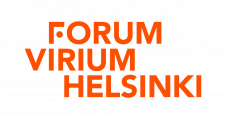.png)
URBAN & LOCAL project supports the innovative and sustainable solutions of the future for the urban restaurant's and local food services', including production, market, and distribution chain. These are required to advance the growth of the companies in the region and to generate a competitive advantage for the same.
Our Goals
The Urban & Local project creates a business ecosystem in the capital region that advances, and utilizes, RDI activities in the food services and restaurants. We create new operation methods, business openings, forms of data collection and sharing models. We promote the introduction of new technologies in the project.
In addition, we are developing a new kind of cooperation for small and medium-sized (SME) companies operating in the local food and restaurant service ecosystem in the capital region.
Our Operations Focus on Platforms
In pilots and test bed environments, the focus is on:
- Utilizing the technologies and digitalization to form a sustainable urban food chain
- Trying out new technologies and solutions on test platforms in the capital region together with companies, organizations and city residents.
Through the project, environment and platforms related to the restaurant and food service sectors of the capital region will also be developed. At the same time, long-term regional R&D cooperation related to the theme is improved and strengthened via this project.
Execution of the Project in Cooperation with
The main coordinator is Forum Virium Helsinki. The project is carried out by Metropolia and Haaga-Helia Universities of Applied Sciences, Perho Culinary, Tourism and Business College and cities of Helsinki and Vantaa.
Visit Reports
Report of Reykjavik, Fridheimar, Iceland Visit 22.-27.04.2024
Written by Kaj Lindedahl, Metropolia, Vantaa, Finland.
Visited and analysed venues:
- Slowfood , Iceland
- Posthus, Reykjavik , Iceland
- Fridheimar, Reykholt, Iceland.
Fridheimar
Fridheimar is a greenhouse in Iceland that is located in the municipality of Reykholt, which is about 1 hour away from Reykjavik. Fridheimar’s greenhouse covers 11,000 m 2 of space and they produce about 700 tonnes of tomatoes per year. In addition to growing tomatoes for Iceland, Fridheimar has become a popular tourist destination, attracting over 200,000 travellers per year, as they have a restaurant located in their greenhouse where visitors can try many unique tomato dishes.
Fridheimar also strives to have responsible and sustainable tourism and their employees share some of their environmentally friendly practices with tourists, when they visit the greenhouse and restaurant. A few of the operations of the organization are specifically impactful when analyzing the environmental impacts of the site. First, Fridheimar uses imported bees and fertilizer from Rotterdam for their greenhouse operations (Bird & Loayza, 2021).
These imports are vital to the operation of the greenhouse yet carbon dioxide (CO2) emissions as well as other harmful environmental by-products are produced during the transportation of bees and the transportation and production of fertilizer.
Secondly, Fridheimar produces tomatoes and distributes them locally in Iceland for grocery stores as well as sending some of their produce internationally. On the other hand, Fridheimar uses a CO2 enrichment system to pump CO2 into their greenhouse to help with the growth of the tomatoes. Like all plants, tomatoes produce energy through photosynthesis, which uses CO2 as an input.
The CO2 used by Fridheimar for this purpose is recovered from geothermal steam and is absorbed by the plants, constituting a reduction in the overall impact of greenhouse operations on the environment.
Finally, in the sale and distribution of Fridheimar’s produce, packaging materials are required.
Fridheimar is different than most greenhouses as they are also a tourist attraction with a restaurant, meaning that they have more of a socio-economic impact than other greenhouses with a sole focus on produce production and marketing. Fridheimar is unique in this aspect as Iceland’s energy production mix is entirely from renewable sources and there is abundant access to geothermal heating. This significantly reduces Fridheimar’s environmental impact by limiting the contribution of the most energy-intensive portion of greenhouse operations.
The growth media used is based upon Kekkilä Professional and the CultiJene by Saint-Gobain.
The problem with malodours insects is combated with use of biological defence from Koppert. Also, the pollination is done by bumblebees from Koppert. The bees are active about 60 days, whereafter they have to be replaced with a new hive.
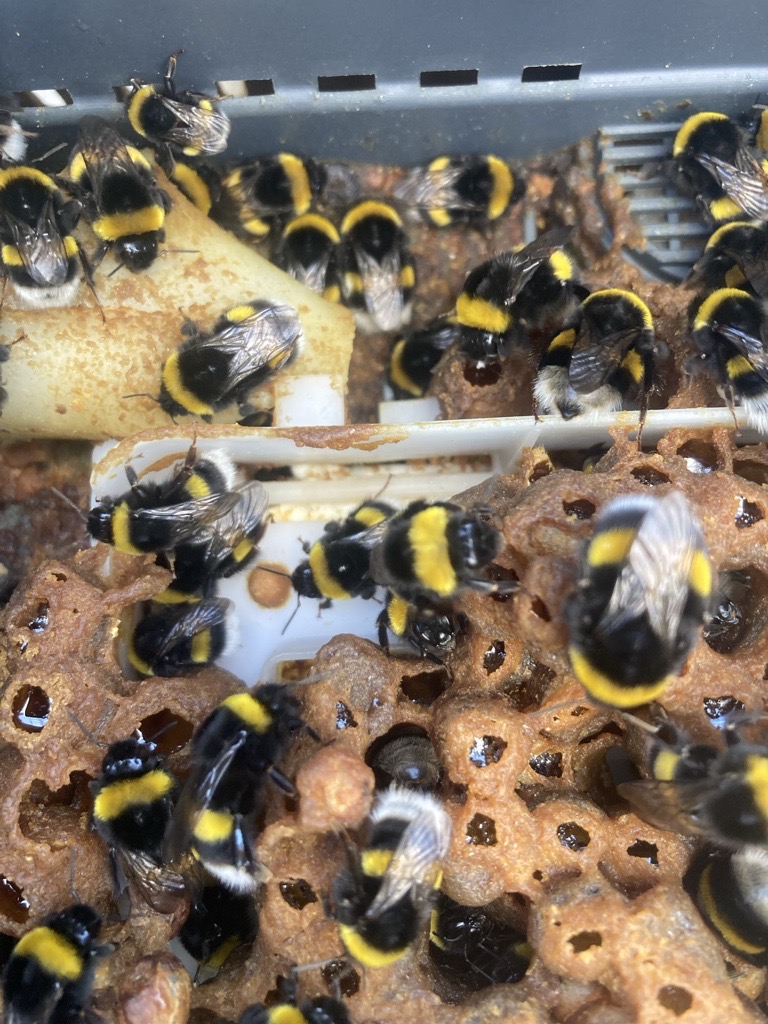
Picture 1. Beehive used in Fridheimar as pesticed and pollinator
Posthus Food Hall
Posthus is located downtown in Reykjavik and as the name indicates the building is an old Post Office. The theme of the restaurants are very international and there is plenty of space in two levels for both lunch and dinner. The practice is to order your meal at a desk at one of the different restaurants operating in the building, once you have paid, you are equipped with a beeper. The beeper is giving up a sound once your meal is ready, and you can go and pick the dish up yourself from the desk.
Common ground
The logistics of the operation is optimized so that there is one central unit which is taking care of all dishes and leftovers on the plate. This is then providing the different restaurants operating in the facilities with their own specific plates, cutlery etc. and also with common knives, forks, spoons. The kitchen at each facility is usually serving the meal on their own specific plates. Drinks and beverage are usually sold over the desk where the food is also prepared. Currently there are nine companies operating in the same venue: Sushi Social, Enoteca, Fuku Mama, Yuzu, Finsen, Mossley, Funky Bhangra, Drykk, Pizza Popolare.
Logistics: As most of the transport is done within the city of Reykjavik it is quite natural to coordinate this activity.
Wooden multifunctional parking buildings
One of the more spectacular sights of the town is the new music house and the adjacent parking facility (to be built).
The music house was located near by the harbour and there was plenty of free space around it.
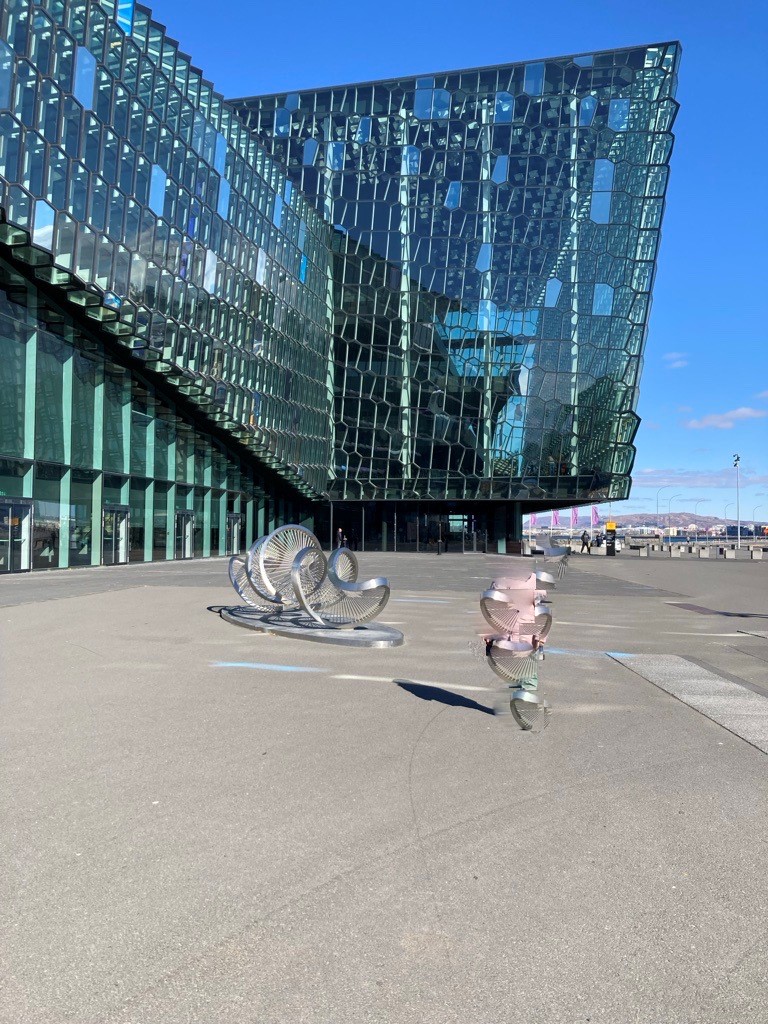
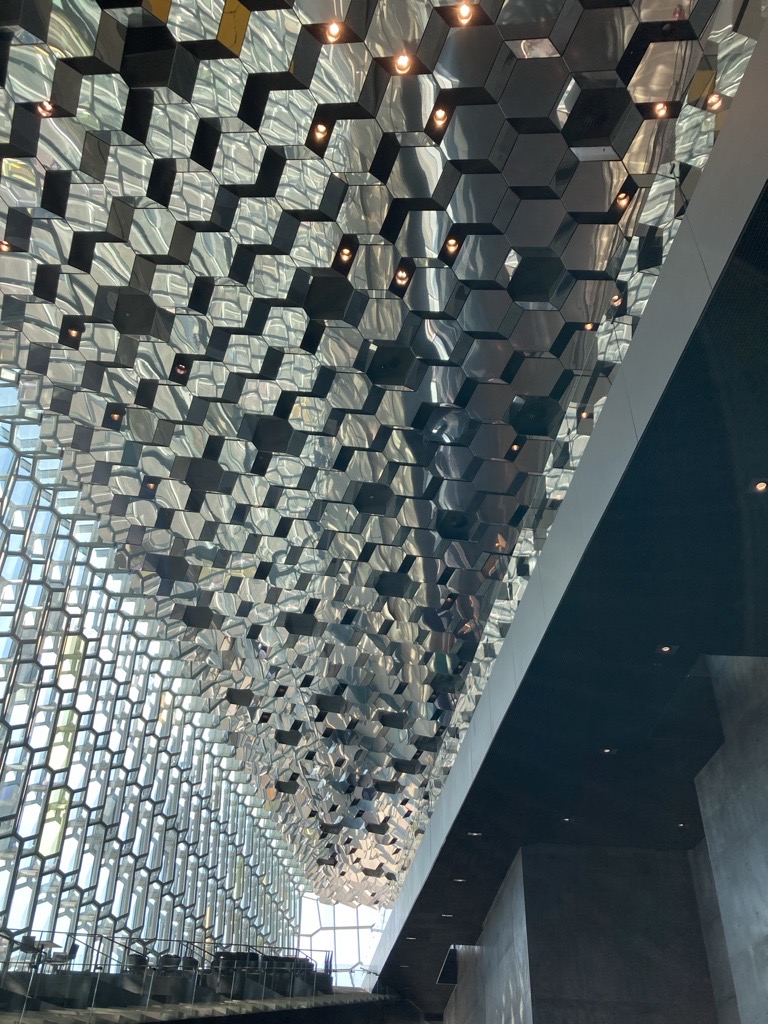
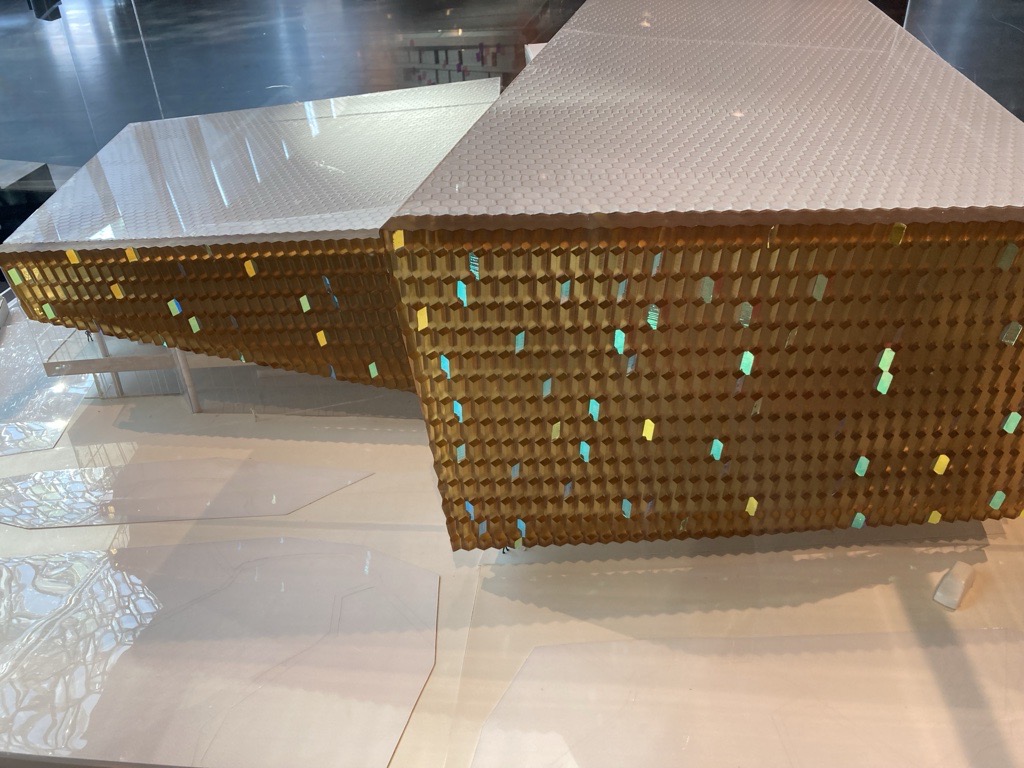
Picture 2. New music house from outside, inside and miniature building
The wooden multifunctional building was to be constructed next to the music building (Harpa) and is a continuation of the strive to build sustainable and reusable buildings in Nordic countries.
See more here: https://whitearkitekter.com/se/projekt/stadsberget/
and here https://www.archdaily.com/884956/park-n-play-jaja-architects
Multipurpose thinking in the design and construction of houses has many advantages. With the help of ad, it is possible to control the use of various buildings inside according to the needs and life patterns of the residents and other users.
Slowfood Iceland
During the visit to Reykjavik University, I had the opportunity to see the Slowfood organisation and activity in action at the spot.
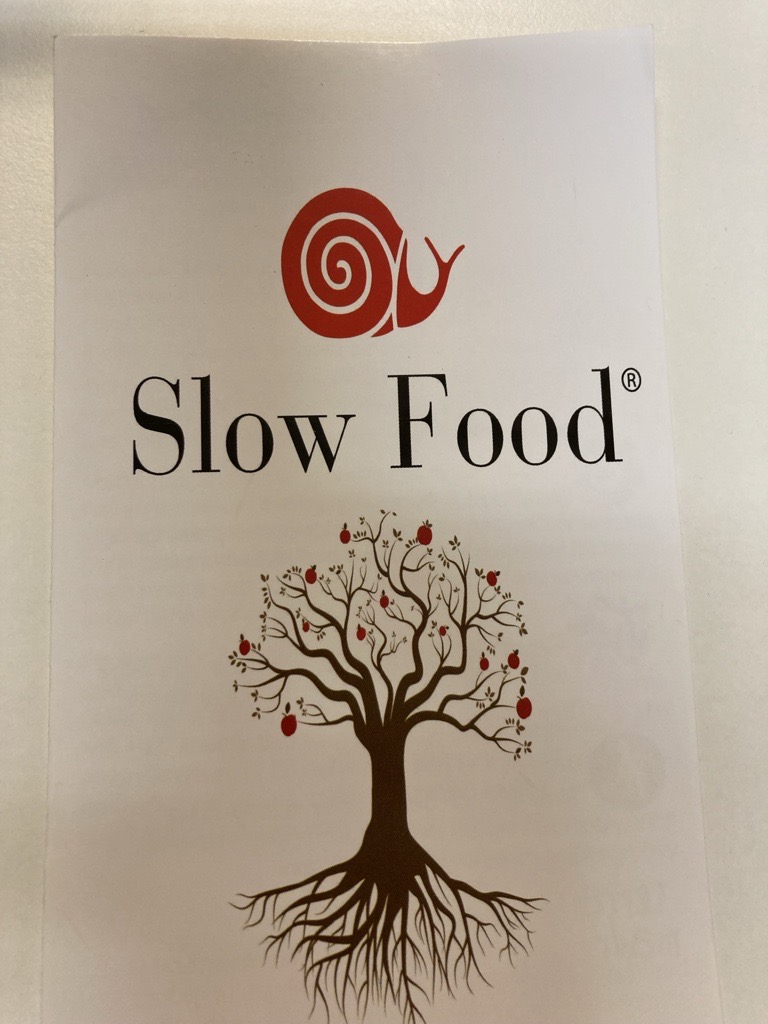
Picture 3. Front page of an info-letter about the organisation
The Slow Food organization is a global movement that champions the importance of preserving traditional and regional cuisine, while advocating for sustainable agricultural practices. It stands as a counterpoint to the fast-paced, industrialized food production systems, promoting the idea that food should be produced in a way that respects the environment, cultural traditions, and supports local communities.
The organization's efforts align closely with the principles of sustainable development. With the aim to meet the needs of the present, without compromising the ability of future generations to meet their own needs. Through initiatives like the Ark of Taste, which lists endangered food products, and the creation of thousands of agroecological gardens worldwide, Slow Food contributes to the conservation of biodiversity and the promotion of sustainable consumption choices.
This approach not only helps in safeguarding the environment but also ensures fair economic returns for small-scale producers, fostering a more equitable food system. The impact of Slow Food has a widespread network, which encourages individuals and communities to partake in a more conscious and responsible food consumption pattern. And this is ultimately progressing nurturing both the local and the planet.
The slow food was hosting an event which took place at the Sun-locality of Reykjavik University building in April 2024. The whole idea was to save the food which had been rescued from being wasted, by making tasting soup in four different versions, picture 4.
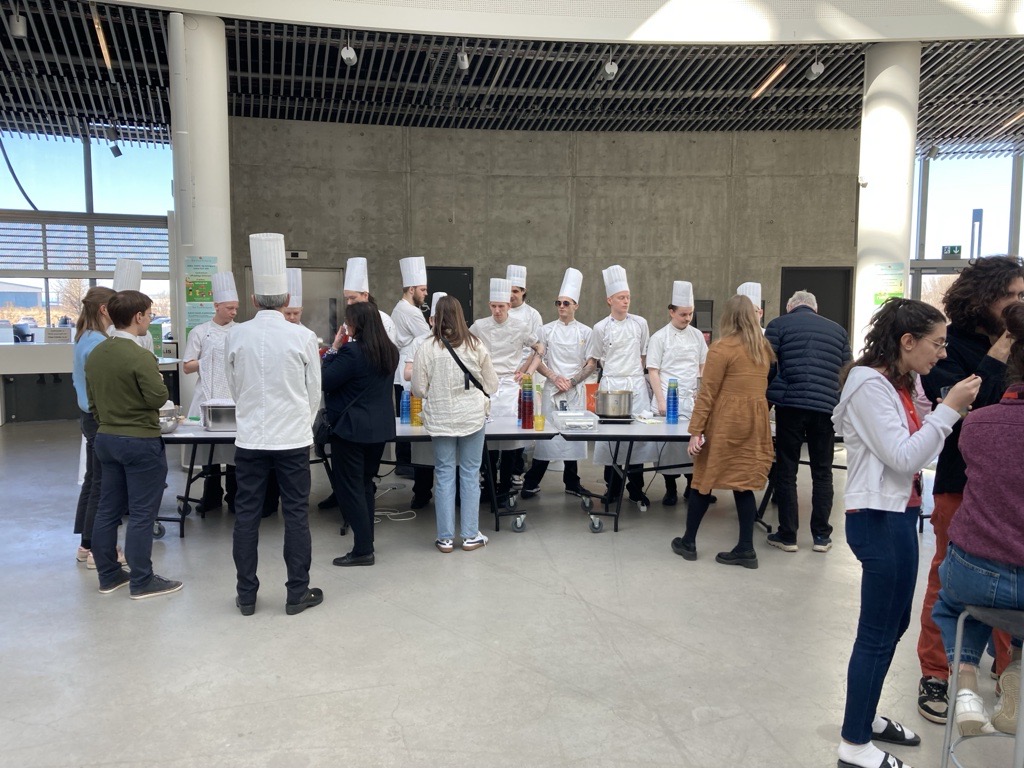
Picture 4. Slow Food happening in the Sun of Reykjavik University , Iceland, 2024
References
- www.slowfood.is, Read: May 5, 2024
- www.slowfood.com, Read: May 5, 2024
- www.fridheimar.is, Read: May 5,2024
- www.posthusfoodhall.is, Read: May 5, 2024
Experiments & Reports
AI for Strawberry Health Project
Project Coordinator’s Perspective – Grace Chung
Patrik Asikainen & Rabindra Mandahar co-author.
Project Aim
The objective of the AI strawberry health project was to explore the possibility of using an AI-powered system to autonomously detect and classify the health status of strawberries growing in the UrbanFarmLab.
The project team includes a few IT students mainly Rabindra Manandhar, mentored by Patrik Asikainen, Project Manager, assisted by Samuli Ahokas, student assistant at the AIoT Garage. The project was managed by Kaj Lindedahl, Project Manager at Urban & Local. The images were provided by Grace chung, project coordinator at Urban & Local. Experts’ consultation included Andrea Patané, Project Coordinator at UrbanFarmLab, and Tuan Nguyen, Senior Lecturer in Smart Industry.

Implementation
Throughout the project, various phases were completed:
Initial Development (Sept 2024):
Phuong initiated the project by developing an AI application using the YOLOv8 model for object detection, focusing on classifying strawberry health issues. The model was trained with a dataset, but adjustments to lighting were needed, as the images captured under purple light distorted the analysis.

Fine-tuning the Model (Oct 2024):
The Roboflow’s dataset was used to build YOLOv8-based object detection model by training and validating the YOLOv8 weights, not to fine-tune the model. When this model was used for inference on the strawberry images from UrbanFarmLab, the accuracy of object detection and classification on those images were not satisfactory. Hence, the captured strawberry images were first annotated for instance segmentation into strawberry plant parts - flower, leaves, and fruits. The segmented images would be used to prepare a custom dataset which is then used to fine-tune YOLOv8-based object detection model to finally detect diseases such as Angular Leafspot, Anthracnose Fruit Rot, and Powdery Mildew, and delivered actionable insights.
Challenges and Adjustments (Dec 2024):
As Rabindra continued testing with various images, a challenge emerged with non-natural light, which impacted the model's ability to accurately detect strawberry health. Rabindra tried using DeOldify (an open-source tool) to adjust the color of the images but encountered issues due to outdated code. The team discussed and Tuan suggested few methods that could be used:
Method 1: Segmentation and Masking
Segment the image, apply masking to focus on specific areas, and then fine-tune the model. This helps the AI focus on relevant parts of the image without treating the entire image as separate.
Method 2: Coefficient Adjustment
Add a coefficient to both purple and white light images, adjusting for light type and wavelength. This helps train the model by accounting for light conditions in the lab.

Data Set Expansion and Training (Feb 2025):
Rabindra worked on expanding the dataset by labeling 56 new images, but due to the lack of sufficient data, the model still lacked accuracy. Despite this, good progress was made with documentation and efforts to define the classification system for healthy vs. unhealthy strawberries.
Outcomes
The main outcomes and lessons learned include:
Lighting Conditions Impact:
The quality of the images, particularly under purple lighting, was a significant factor in reducing the model’s accuracy.
Data Requirements:
The model’s performance was directly tied to the quantity and quality of the dataset. It became clear that a large and varied dataset (at least 500-1000 images) was necessary for the AI to provide reliable predictions.
Complexity of Analysis:
Leaves with varying textures and colors added complexity to the AI's analysis.
Time vs. Efficiency:
Training an AI takes significant time, but once trained, the model would perform efficiently. This insight gave a better understanding of the time that would be required for training an AI model.
Ideas for Next Steps
In the next few weeks, new strawberries will be planted. This presents an opportunity to capture fresh, high-quality images under controlled lighting conditions, which will improve the dataset.
In conclusion, while the project faced significant challenges, particularly around data quantity and lighting conditions, there was valuable progress made in understanding how AI can be applied to strawberry health analysis. The next steps, if we proceed with the project, will focus on expanding the dataset (about 3000 – 5000 images), refining image capture, and improving the model to get more reliable results in future implementations. It is also important to consider the camera angle, image distance and image resolution to get robust images.
References
https://docs.ultralytics.com/quickstart/
https://blog.roboflow.com/getting-started-with-roboflow/
https://www.geeksforgeeks.org/image-segmentation-with-mask-r-cnn-grabcut-and-opencv/
https://medium.com/ [at] stefan.herdy/pytorch-semantic-image-segmentation-b726589662e3
Urbanfarmlab Products and Product Development
You can check down below, how have we been utilizing our surplus yield after all the demanded chemical analyses are completed in our laboratories.

Chilisalt made by Urbanfarmlab from our own chilies

Tomatoes grown in Urbanfarmlab are used in Varia's bakery to prepare pizzas.

Urban & Local trainees Aino Frankberg and Jenna Jakola made spruce sprout honey syrup using products from Espoo Hunajan and 6Kerkkä.

Edible flowers grown in Urbanfarmlab were used to decorate cakes in Bakery of Varia.
More Information
Contact Information
- Project Manager Kaj Lindedahl, Metropolia UAS, Kaj.Lindedahl [at] metropolia.fi (Kaj[dot]Lindedahl[at]metropolia[dot]fi)
- Project Coordinator Oruç Can Hasmaden, Metropolia UAS, Oruc.Hasmaden [at] metropolia.fi (Oruc[dot]Hasmaden[at]metropolia[dot]fi)
- Communications Manager Grace Chung, Metropolia UAS, Grace.Chung [at] metropolia.fi (Grace[dot]Chung[at]metropolia[dot]fi)
- Bio Technology Specialist Markus Räsänen, Metropolia UAS, Markus.Rasanen [at] metropolia.fi (Markus[dot]Rasanen[at]metropolia[dot]fi)
- Food Technology Specialist Pia-Tuulia Laine, Metropolia UAS, Pia.T.Laine [at] metropolia.fi (Pia[dot]T[dot]Laine[at]metropolia[dot]fi)
- Laboratory Analytics Specialist Marja-Leena Åkerman, Metropolia UAS, Marja.Akerman [at] metropolia.fi (Marja[dot]Akerman[at]metropolia[dot]fi)


